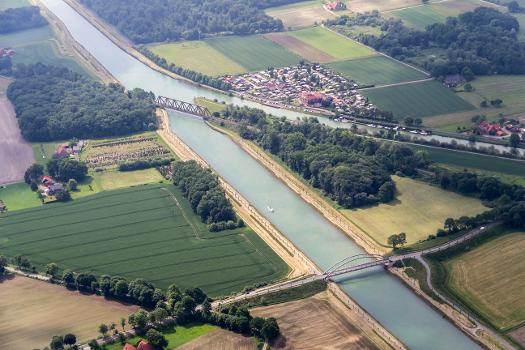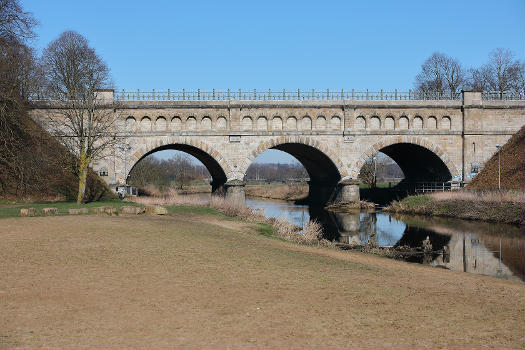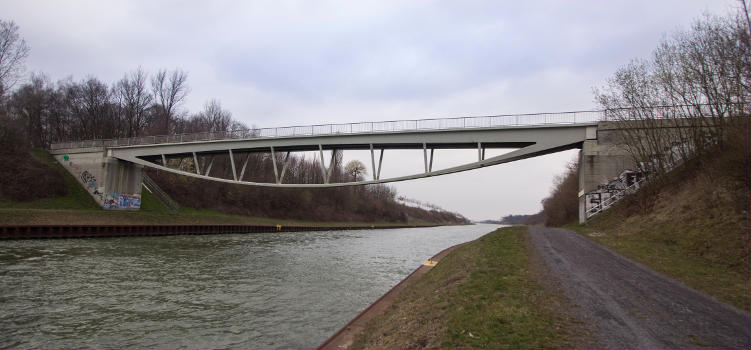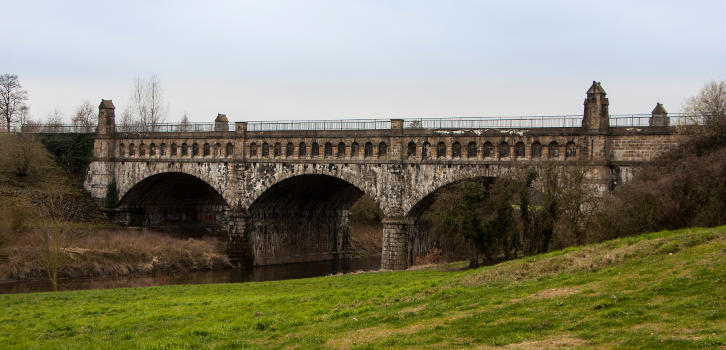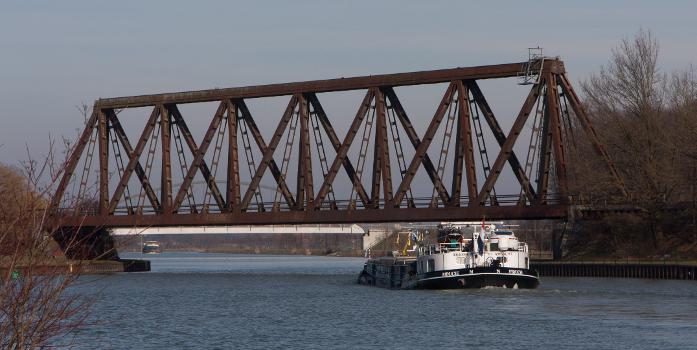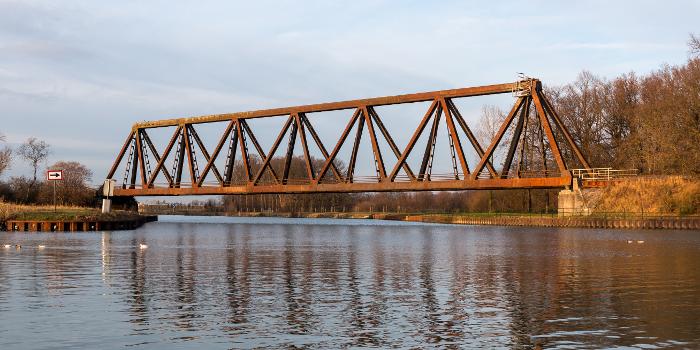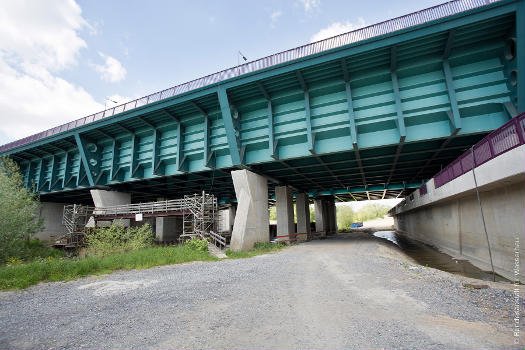General Information
Project Type
| Function / usage: |
Canal |
|---|
Location
| km | Name |
| 1.986 | |
| 3.201 | |
| 3.201 | |
| 3.509 | |
| 4.610 | |
| 8.800 | |
| 14.773 | |
| 15.211 | |
| 15.652 | |
| 16.960 | |
| 21.630 | |
| 22.130 | |
| 22.130 | |
| 24.379 | |
| 36.280 | |
| 67.295 | |
| 78.806 | |
| 78.806 |
Technical Information
Dimensions
| total length | 296 km |
Excerpt from Wikipedia
The Dortmund–Ems Canal is a 269-kilometre (167 mi) long canal in Germany between the inland port of the city of Dortmund and the seaport of Emden. The artificial southern part of the canal ends after 215 kilometres (134 mi) at Herbrum lock near Meppen. The route then takes the river Ems for 45 kilometres (28 mi) to Oldersum lock. From there, the canal continues along a second artificial segment of 98 kilometres (61 mi). This latter section was built because inland ships at the time of the construction of the canal were not built for the open sea, which they would have faced at the Dollart and the entry to the sea port of Emden. It is connected to the Ems-Jade Canal from Emden to Wilhelmshaven.
History
The canal was opened in 1899 (1899) to reduce demand on the railway network, which could not cope with the transport of products from the Ruhr area. Also, the canal was supposed to make coal from the Ruhr area more competitive compared to imported English coal. Furthermore, the steel industry in the eastern Ruhr area needed to import ore from abroad.
The canal was attacked numerous times during World War II due to its strategic importance. Operation Garlic, an attack in September 1943 by 617 Squadron RAF (the "Dambusters") was unsuccessful and costly. The squadron attacked it again in September 1944 using Tallboy "earthquake" bombs breaching it and causing considerable damage. It was repaired after the conflict.
Description
The best known building of the Dortmund-Ems canal is the Henrichenburg boat lift in Waltrop, which enabled a ship to bridge a difference in height of 14 metres (46 ft). It operated until 1962, and was then replaced by a new elevator and a lock. Today it houses the Westfälisches Industriemuseum.
Some kilometres to the north, the canal reaches the city of Datteln, which lies at the crossroads of four canals:
- Datteln-Hamm Canal
- Wesel-Datteln Canal
- Dortmund–Ems Canal
- Rhein-Herne Canal
The old route of the canal crosses the rivers Lippe, Stever and Ems on bridges. These bridges are built with large arches, and the bridge over the Lippe lies 15 metres (49 ft) above the river.
After the Second World War, the canal had to be widened. Those parts that were above ground level could not easily be widened, and therefore a new route was constructed between Olfen and Münster. It lies parallel to the old route, and new river crossings were also built. The old route was closed for shipping.
Text imported from Wikipedia article "Dortmund–Ems Canal" and modified on July 22, 2019 according to the CC-BY-SA 4.0 International license.
Participants
Relevant Web Sites
Relevant Publications
- (2019): Planung und Umsetzung von fünf großen Bauprojekten an der Dortmund‐Ems‐Kanal‐Nordstrecke. In: Bautechnik, v. 96, n. 8 (August 2019), pp. 632-637.
- (2000): Stadtlandschaft und Brücken in Hannover. Der Mittellandkanal als moderner Schifffahrtsweg. Schlütersche Verlag, Hanover (Germany), pp. 21.
- About this
data sheet - Structure-ID
10000161 - Published on:
02/10/2002 - Last updated on:
19/02/2025

